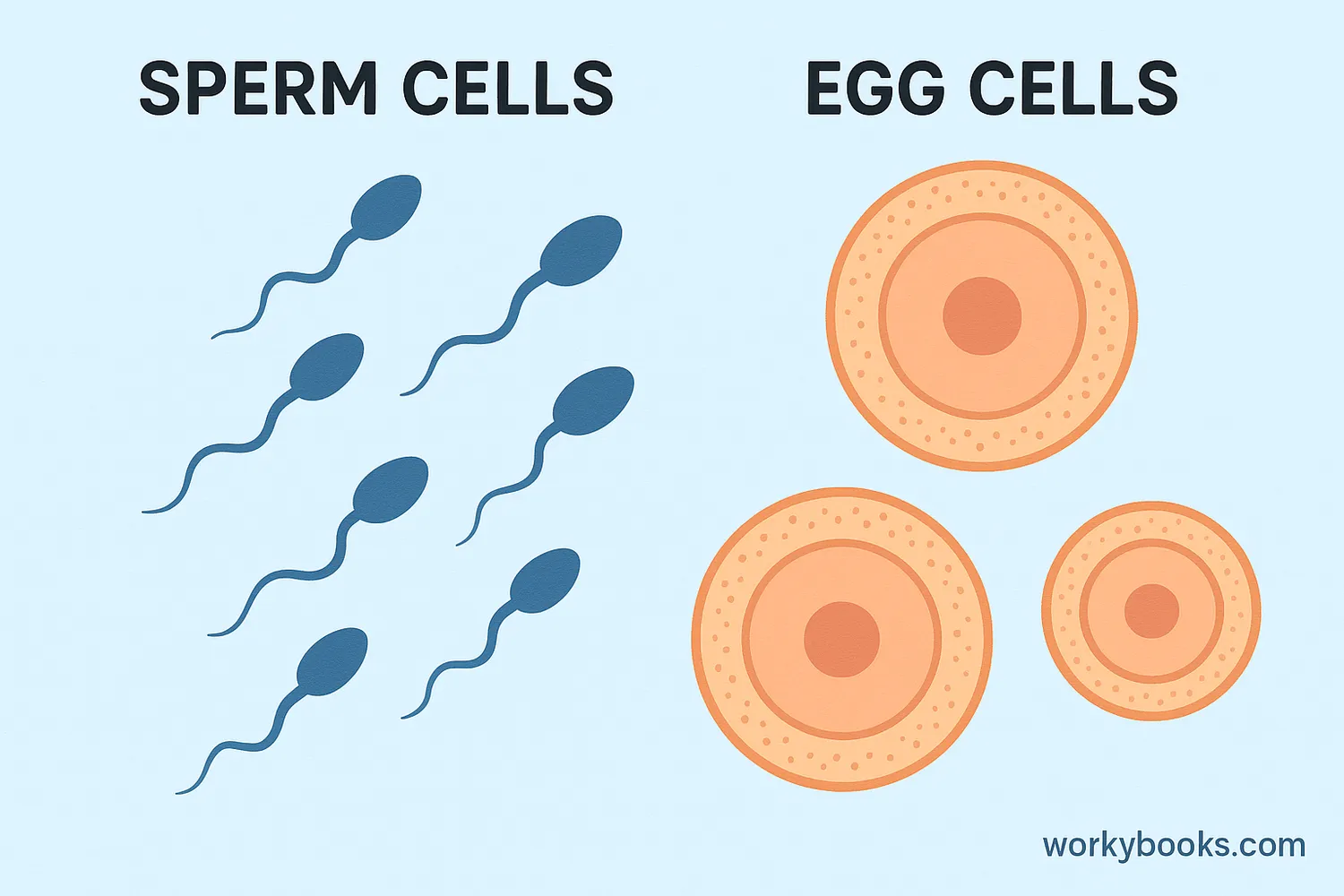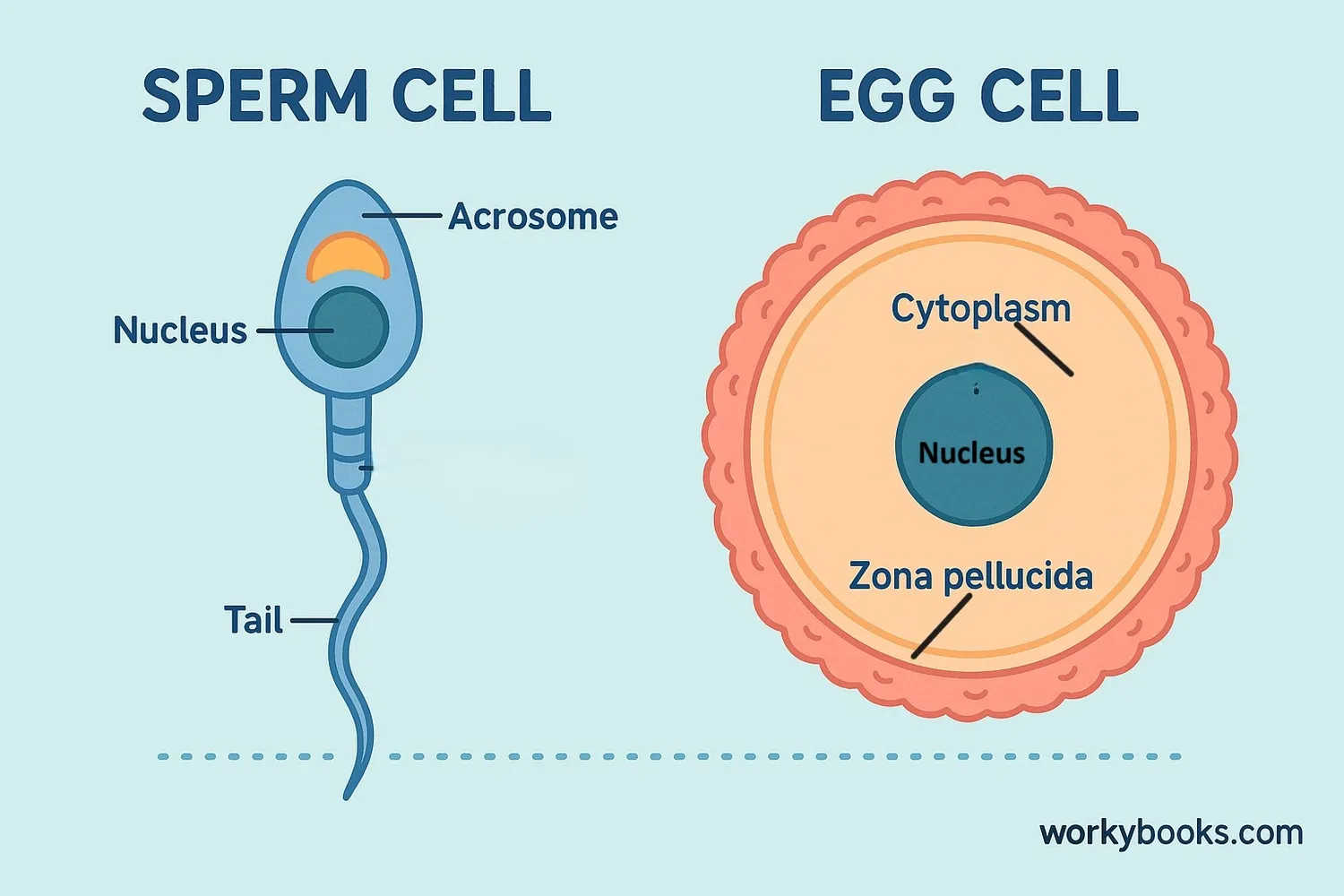Gametes - Definition, Examples, Quiz, FAQ, Trivia
Discover how special cells create new life through reproduction
What are Gametes?

Gametes are special cells that living things use to create offspring. They are often called reproductive cells or sex cells. In animals and humans, there are two types of gametes: sperm from males and eggs (ova) from females.
What makes gametes special is that they have only half the usual number of chromosomes. Regular body cells have pairs of chromosomes, but gametes have just one from each pair. When two gametes join during fertilization, they create a new cell with the complete set of chromosomes needed to develop into a new organism.
Key Point
Gametes are different from other cells because they have half the usual number of chromosomes. This allows them to combine and create new life with the correct number of chromosomes.
Types of Gametes

There are two main types of gametes, each with special features that help them perform their role in reproduction:
Sperm Cells
Male gametes are small, mobile cells with tails that help them swim toward the egg
Egg Cells
Female gametes are larger, contain nutrients, and are not mobile
Plant Gametes
In plants, pollen contains male gametes and ovules contain female gametes
Despite their differences, both types of gametes have the same important job: to carry genetic information and combine to create a new individual. The sperm's main job is to reach and fertilize the egg, while the egg's job is to provide nutrients and the cellular machinery needed to begin development.
Did You Know?
The human egg cell is one of the largest cells in the body—about the size of a speck of dust—while sperm are among the smallest!
Gamete vs Zygote
Understanding the difference between gametes and zygotes is key to understanding reproduction:
| Feature | Gamete | Zygote |
|---|---|---|
| Chromosomes | Half the normal number (haploid) | Full set (diploid) |
| Formation | Created through meiosis | Formed when gametes fuse |
| Function | Carry genetic information for reproduction | First cell of a new organism |
| Number of cells | Two separate cells (sperm and egg) | Single combined cell |
| What happens next | Seeks to fertilize or be fertilized | Begins dividing to form an embryo |
The magical moment when reproduction occurs is called fertilization. This is when a sperm cell successfully enters and combines with an egg cell. Their nuclei fuse together, combining their genetic material to create a single cell called a zygote. This zygote has the complete set of chromosomes needed to develop into a new individual.
Science Connection
The zygote is the beginning of a new life! It immediately begins dividing through mitosis to form all the cells that will become a new organism.
Gametes Knowledge Check
Test your understanding of gametes with this quiz. Answer all 5 questions to see how much you've learned.
Frequently Asked Questions
Here are answers to some common questions about gametes:
Interesting Gamete Facts
Discover some amazing facts about gametes and reproduction!
Numbers Game
Human males produce enormous numbers of sperm—about 1,500 per second! That's over 100 million in a single day. In contrast, females are born with all the egg cells they'll ever have—about 1-2 million, though this number decreases over time.
Size Difference
The human egg cell is actually visible to the naked eye—it's about the size of a period at the end of this sentence. Sperm, meanwhile, are among the smallest cells in the body—about 50,000 times smaller than the egg!
Amazing Journey
Relative to their size, sperm make an incredible journey. If a sperm were the size of a person, its journey to the egg would be equivalent to swimming 40 miles! Only a few hundred sperm out of millions actually reach the egg.
Plant Reproduction
Some plants have both male and female gametes in the same flower, while others have separate male and female flowers. Date palms can even have separate male and female trees!


